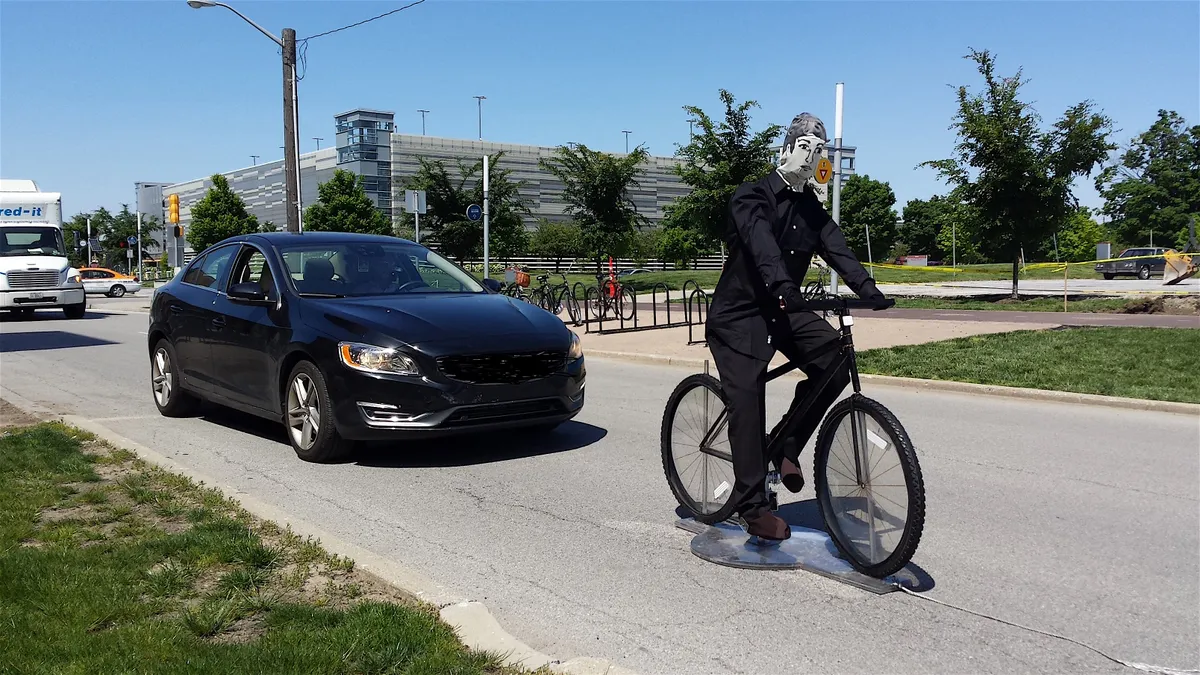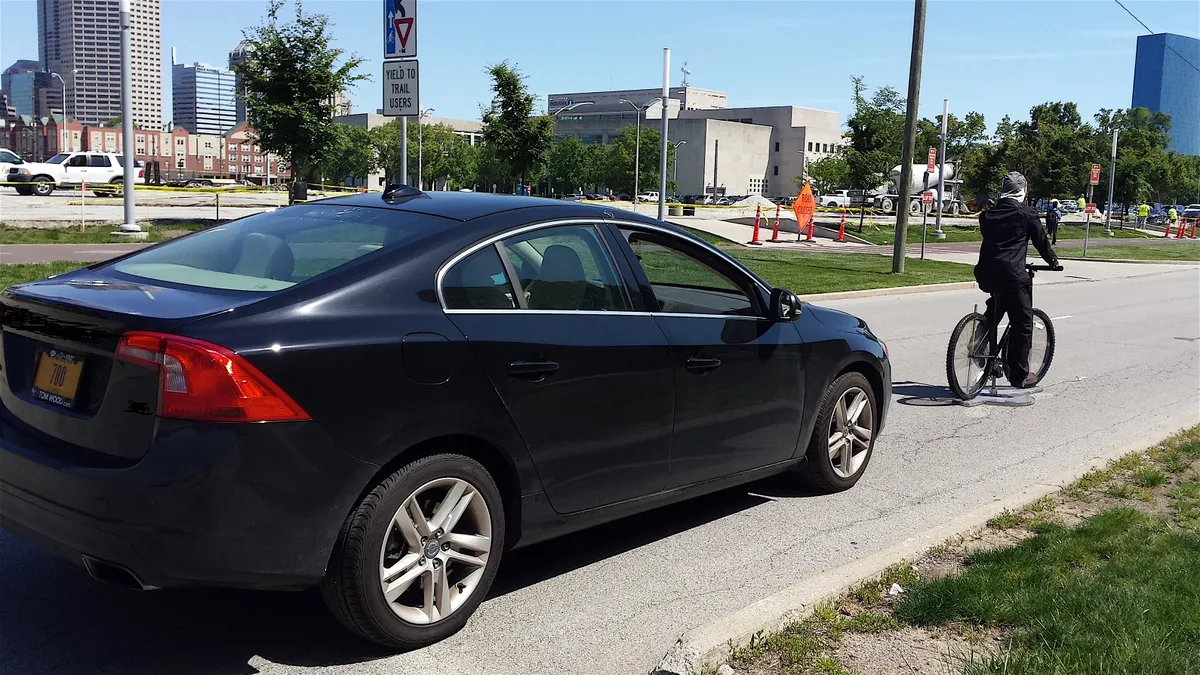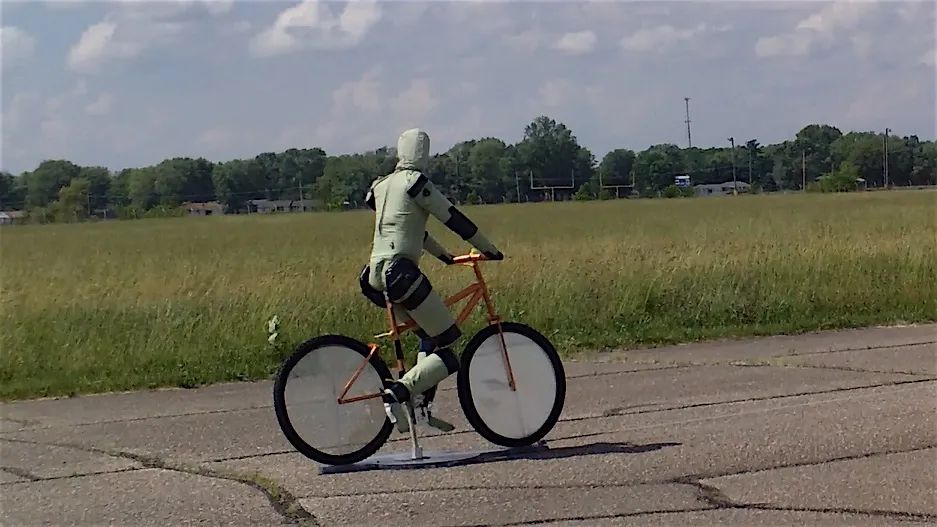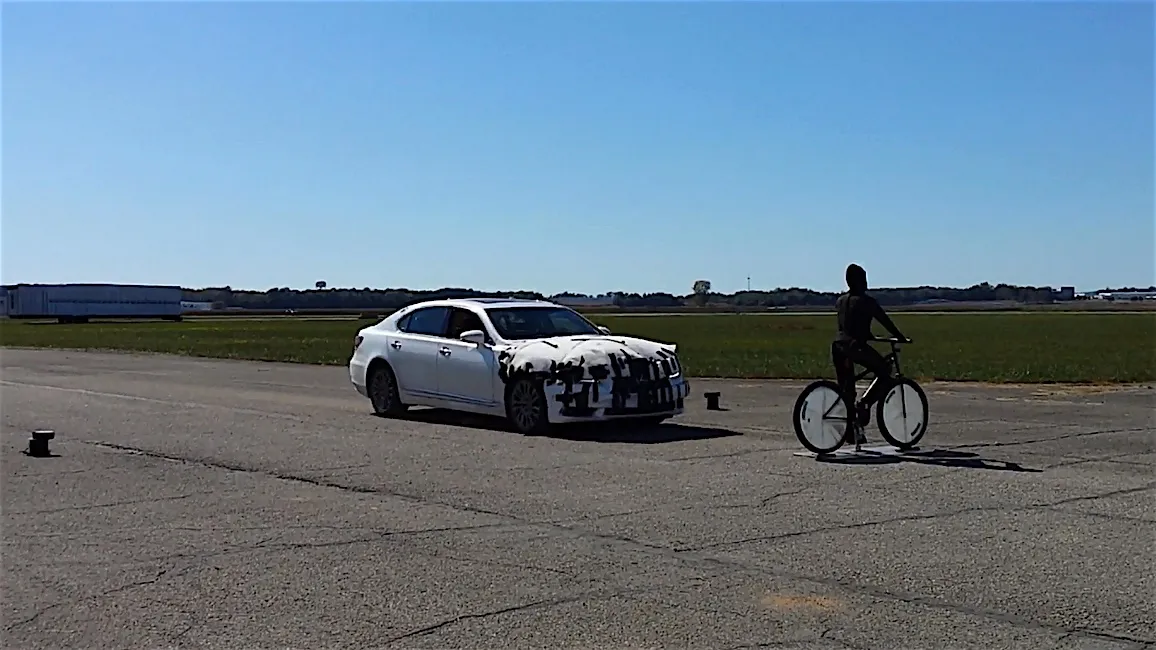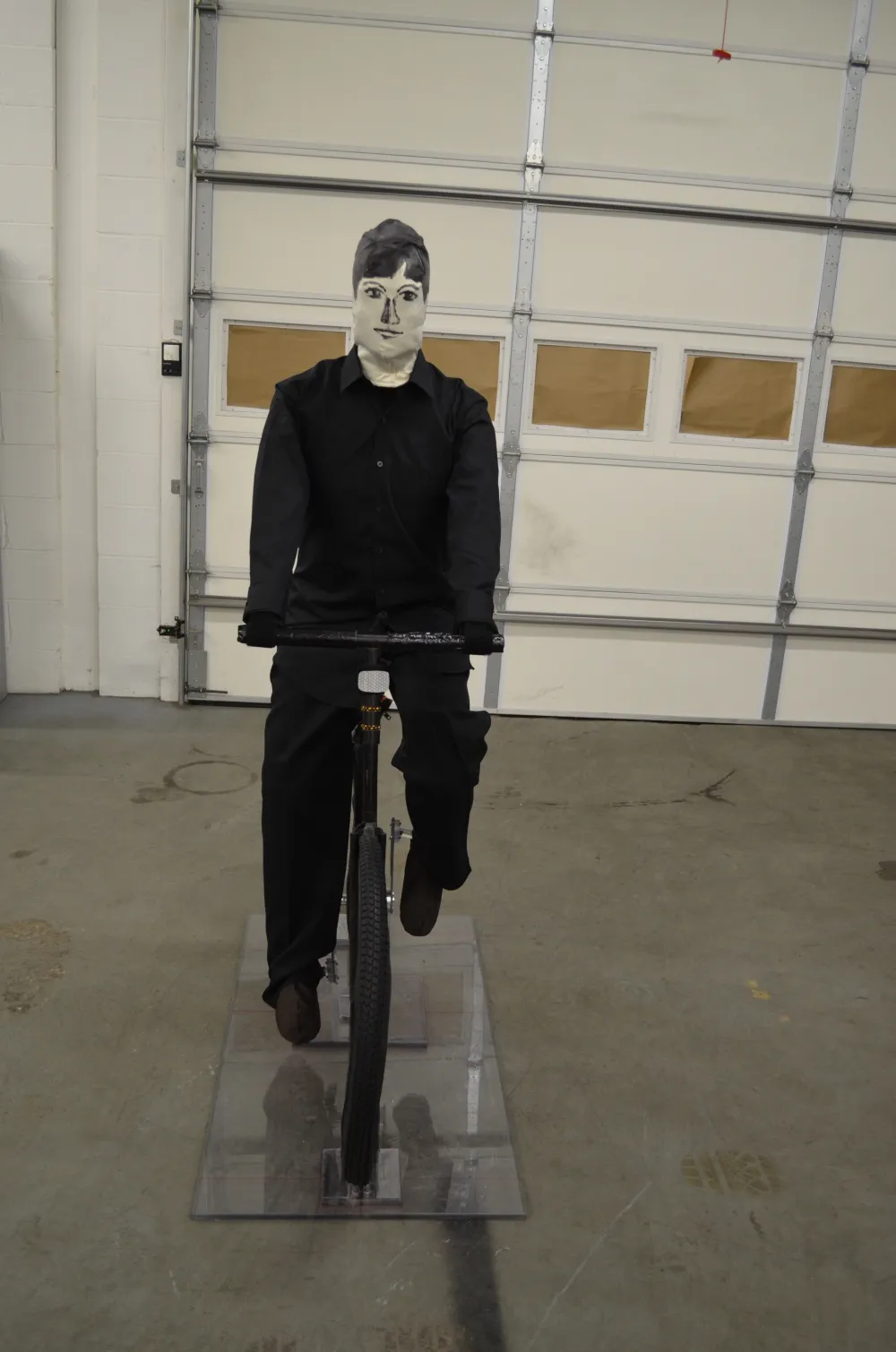Road cycling should get even safer from 2018 because new cars will be able to spot cyclists and brake automatically, preventing collisions when the driver isn't paying attention
- How to ride safely in traffic
- 8 safe cycling tips for Londoners
- Strava Beacon reassures your friends and family that you’re safe
The organizations for rating car safety, NCAP and EuroNCAP, will give extra brownie points to manufacturers that include cyclist-detection systems to trigger emergency stops when a crash seems likely.
Unlike a regular bike, they're not self-stable when moving so they ride on a skateboard-like sled that's winched across the path of oncoming cars
Car-makers are already testing prototype cyclist-detectors by fitting enhanced radar and camera systems in the front of their cars. Although pedestrian-detection has been around since 2010, it's not so easy for a cyclist to be "seen" quickly enough for the existing technology to trigger automatic emergency braking.
Compared to pedestrians, cyclists vary greatly in speed and shape and can change direction quickly. The fact that SMIDSY ("Sorry mate, I didn't see you") is a cliché among victim cyclists shows how hard human drivers find cyclist-detection, so an electronic system has to do even better.
Most use radar with a frequency of 77GHz and the data is fused with streaming camera images. Computer software analyzes it all to recognize cyclists, their speed and direction. Then it calculates if the car is on a collision course. If the prediction is grim, it slams on the brakes faster than a driver can.
Or so the theory goes. First it has to be tested to make sure it works.
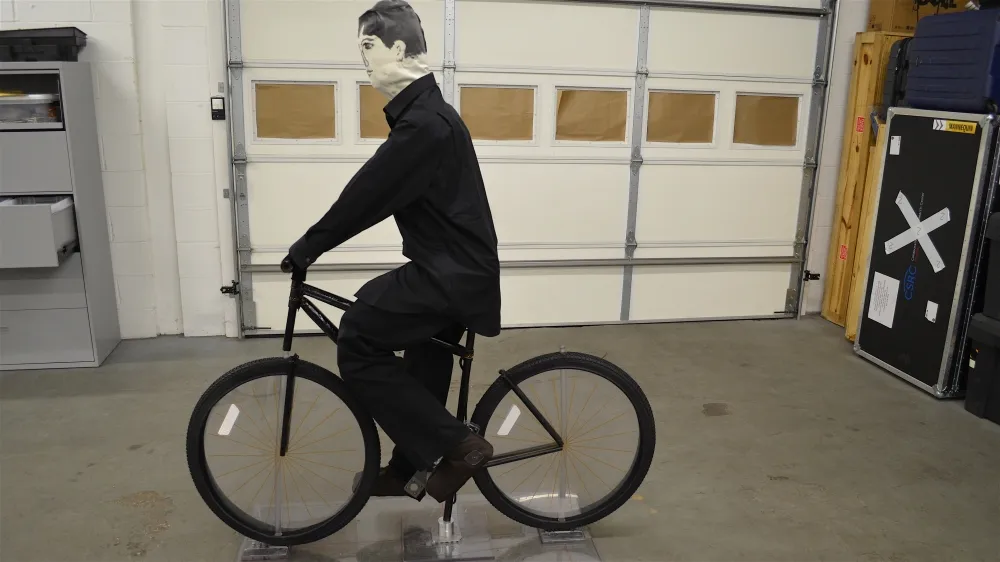
Of course, it's not practical or ethical to recruit cyclists to ride around cars that might crash into them so engineers have had to create some extraordinary crash test bicycles.
They're made of light plastic tubes and wheels so they don't damage the test cars when there's a collision. But, to show up on the detectors, they have copper wire and radar-reflecting material stuck to the plastic.
Unlike a regular bike, they're not self-stable when moving so they ride on a skateboard-like sled that's winched across the path of oncoming cars. Yet they do have moving parts.
In the US version, designed for Toyota's safety research centre, a small electric motor makes the pedals go round so the legs of the crash test dummy cyclist move realistically. The European version made by 4Active Systems for BMW, Peugeot, Citroen, VW and others, has rotating wheels. The movement gives the radar extra clues about the speed of the dummy bike.
Even though they'll never meet UCI approval and are completely un-rideable, there's something about the crash test bicycles every cyclist would want. All the tubes are joined by elastic and snap back together like tent poles so that after a collision it takes less than five minutes to rebuild them as good as new.
Max Glaskin is an award-winning freelance journalist who tweets about cycling and science as @CyclingScience1 and is the author of Cycling Science (published by Frances Lincoln UK, Chicago University Press USA, and seven other languages).
